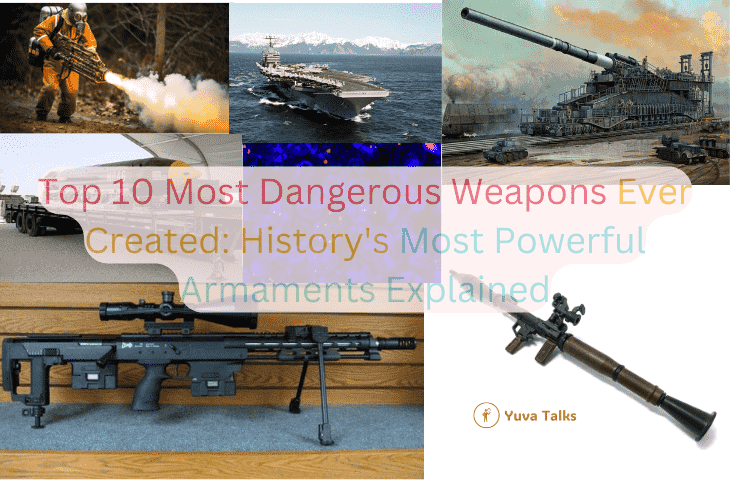Let’s explore ten of the most dangerous and lethal weapons ever devised by humanity. Unsurprisingly, all of these weapons are inventions from the 20th century, although some have roots that date back thousands of years.
We’ll begin by examining three weapons designed for use by individual soldiers before delving into the larger, more powerful arsenals.
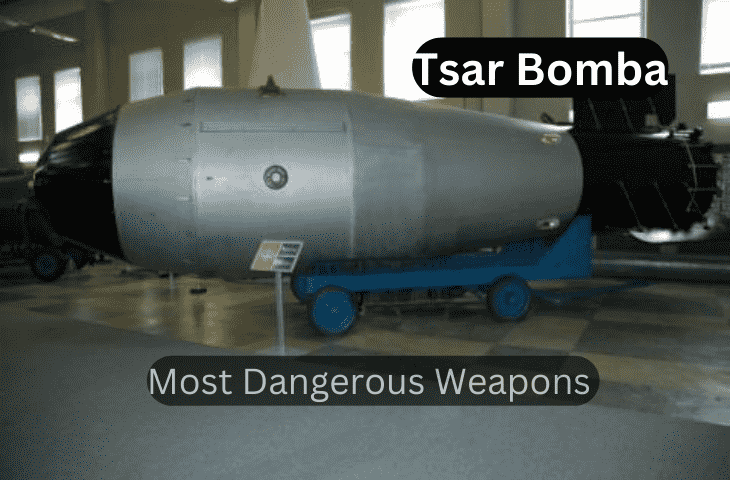
The term “weapons of mass destruction” perfectly describes the Tsar Bomba. This colossal weapon was the Soviet Union’s response to the United States’ nuclear advancements. Designed to obliterate everything in its path, the Tsar Bomba was a singular, devastating device. Only one test detonation occurred, but it was enough to demonstrate its immense power.
The Tsar Bomba remains the most powerful explosive ever tested by humanity. For comparison, the United States’ most potent device was the B41, the only three-stage nuclear weapon they developed, with a maximum yield of 25 megatons of TNT. In contrast, the Tsar Bomba boasted a maximum yield of 100 megatons of TNT.
The detonation of this colossal bomb produced an enormous mushroom cloud, estimated to have reached an astonishing height of 40 miles, roughly seven times the height of Mount Everest. This towering cloud penetrated both the stratosphere and the mesosphere.
Accompanying the mushroom cloud was a tremendous fireball. Upon detonation, this fireball nearly reached the altitude at which the bomb was released and could be seen from over 600 miles away.
The Tsar Bomba was constructed primarily to showcase the Soviet Union’s military might. Its sheer size rendered it impractical for actual wartime use. Transporting the bomb was exceedingly difficult, and it barely fit on the specially modified jet that carried it. Furthermore, the crew of the plane faced only a 50% chance of survival. These complications arose even after the bomb was reduced from its original 100-megaton design.
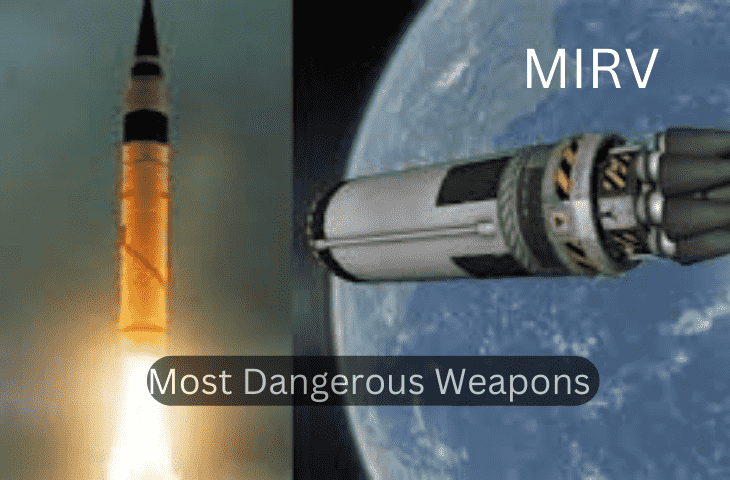
The MIRV, or Multiple Independently Targetable Re-entry Vehicle, is an advanced payload for ballistic missiles designed to carry several warheads. Unlike older warheads, which could only deliver a single nuclear bomb to one target, MIRVs bring significant improvements.
Initially, missiles evolved to carry multiple reentry vehicles (MRVs) that could release several warheads. However, these warheads were dispersed randomly, resulting in an effect similar to a shotgun blast, without precise targeting.
MIRVs overcome this limitation by allowing each warhead to be independently aimed at different targets, ensuring accurate strikes.
Also Read:- Top 10 Most Successful Women Entrepreneurs in India (2024)
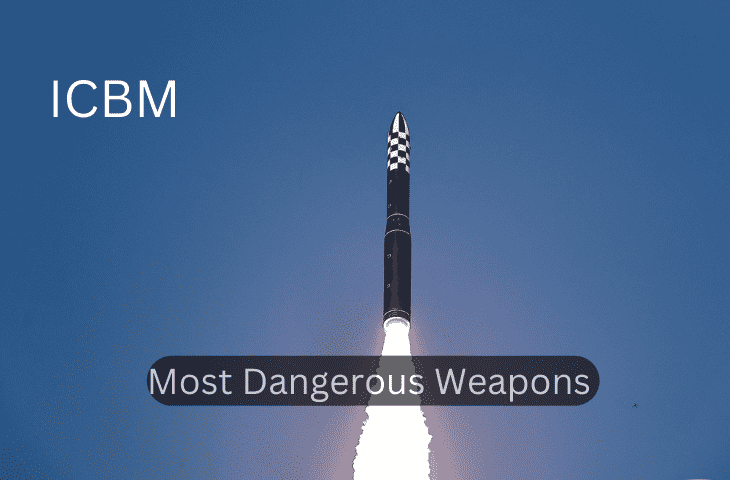
The Intercontinental Ballistic Missile (ICBM) is a type of ballistic missile designed to be accurately guided to its target. With a minimum range of 3,400 miles, ICBMs were primarily developed to carry nuclear warheads.
Additionally: The Invasion of Europe at the Start of World War II ICBMs can be launched from various platforms, including airplanes, submarines, missile silos, and vehicles. They played a crucial role in the concept of Mutually Assured Destruction (MAD) due to their capacity to enable a retaliatory strike, ensuring that any attack would be met with a devastating counterattack. This essentially guaranteed a second strike capability against an adversary.
As technology advanced, ICBMs were equipped with Multiple Independently targetable Reentry Vehicles (MIRVs), allowing a single missile to deliver multiple nuclear warheads to different targets simultaneously.
Also Read:- Top 10 Fastest Motorcycles In The World?
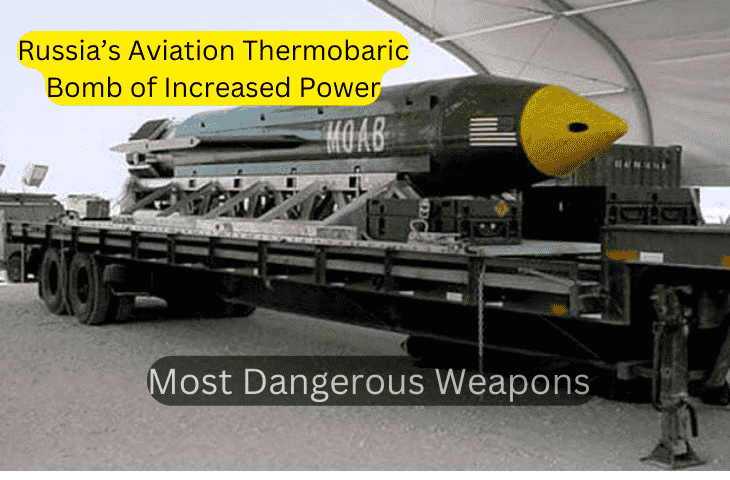
“All that is alive merely evaporates,” said Russian Deputy Chief of the General Staff Alexander Rukshin when discussing their newly developed bomb.
In 2007, Russia successfully tested and unveiled the “Aviation Thermobaric Bomb of Increased Power,” quickly dubbed the “Father of All Bombs” (FOAB).
The FOAB is said to be four times more powerful than the US military’s largest non-nuclear bomb, the GBU-43/B Massive Ordnance Air Blast, which is officially designated as MOAB and popularly known as the “Mother of All Bombs.”
This makes the Russian bomb the most powerful non-nuclear conventional weapon in the world.
The FOAB replaces several smaller nuclear bombs in the Russian arsenal. It has an explosive yield equivalent to 44 tons of TNT while using only seven tons of a new high explosive.
Its blast and pressure wave create an effect similar to a small nuclear explosion, though on a smaller scale. The bomb detonates mid-air, creating a supersonic shockwave and extreme temperatures.
Thermobaric weapons generate longer-lasting blast waves with higher temperatures compared to conventional explosives. Consequently, they cause more damage over larger areas than conventional weapons of similar mass.
Unlike traditional explosives, thermobaric bombs use oxygen from the atmosphere rather than relying on an internal oxidizing agent. This results in higher energy output, making them more challenging to control.

In ancient mythology, a chimera refers to a creature composed of parts from different animals, much like a hippogriff or griffin, which aptly parallels this virus.
A chimera virus is created by merging the DNA of two or more distinct viruses. During the 1980s, Soviet scientists conducted experiments in which they combined genetic material from various viruses with that of smallpox or other viruses, resulting in the creation of chimeric viruses. This process enabled the new virus to maintain the virulence and microscopic appearance of smallpox, while simultaneously acquiring the ability to spread a completely different infection.
This advancement in genetic manipulation allows these viral agents to evade existing treatments and vaccines, significantly heightening their lethality.
Also Read:- Top 10 Most Expensive Paintings in the World 2024
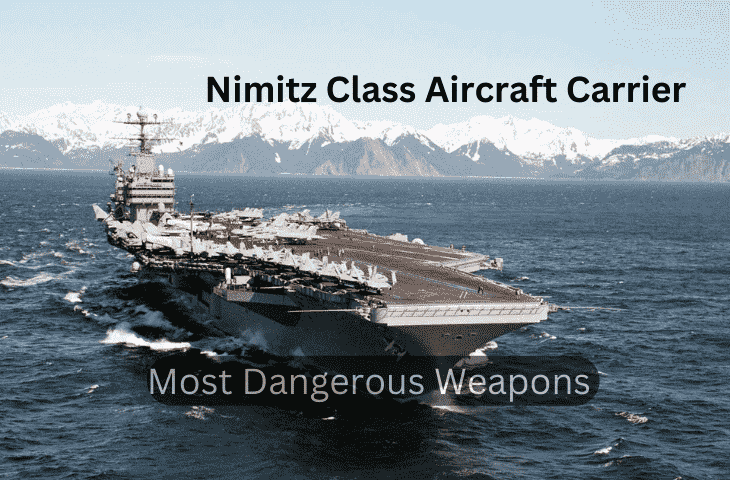
The Nimitz Class aircraft carriers, towering over 1,000 feet in length, stand as the largest warships globally and also the most costly, each commanding a price tag of approximately US$4.5 billion. These immense carriers, weighing 100,000 tonnes, boast the capacity to house up to 90 aircraft, alongside formidable anti-aircraft guns and missile systems.
Designed to serve for a half-century, these carriers are already being succeeded by the Gerald R. Ford Class, expected to be even larger and costing around US$12 billion. Currently, the United States Navy operates ten Nimitz Class carriers, with the lead ship named in honor of Fleet Admiral Chester W. Nimitz, commander of the U.S. Pacific Fleet during World War II and the Navy’s last fleet admiral.
Diverging from conventional propulsion methods, these carriers utilize two nuclear reactors powering four propeller shafts, enabling speeds exceeding 30 knots. Their nuclear power capability allows them to operate autonomously for more than two decades without refueling, providing unparalleled global power projection and defensive capabilities.
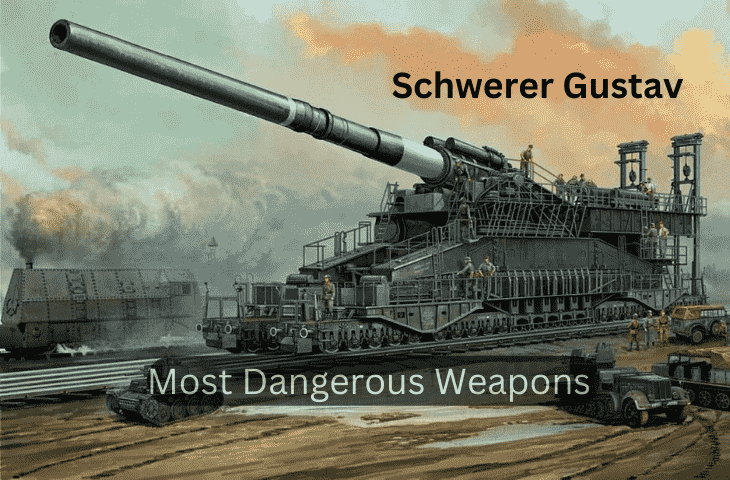
‘Schwerer Gustav’ was a colossal 80 cm railway gun developed by Krupp of Essen in the late 1930s. Its primary objective was to neutralize the formidable forts of the French Maginot Line, considered the most robust fortifications of their time.
Capable of launching seven-ton shells over distances of 47 kilometers, ‘Gustav’ weighed a staggering 1,350 tons when fully assembled. Initially intended for the Battle of France, it was not ready for action when the blitzkrieg tactics of the Wehrmacht swiftly bypassed the Maginot Line’s defenses, rendering its destruction unnecessary.
Later in the war, ‘Schwerer Gustav’ saw action on the Eastern Front during Operation Barbarossa, notably in the bombardment of Sevastopol where it demolished an ammunition depot buried deep beneath layers of rock.
Although planned for potential use in Leningrad and Warsaw, the gun was dismantled by the Germans in 1945 to prevent capture by advancing Soviet forces. It remains the largest-caliber and heaviest mobile artillery weapon ever built, distinguished for firing the most massive shells used in combat.
Also Read:- Top 10 Most Expensive Phones 2024
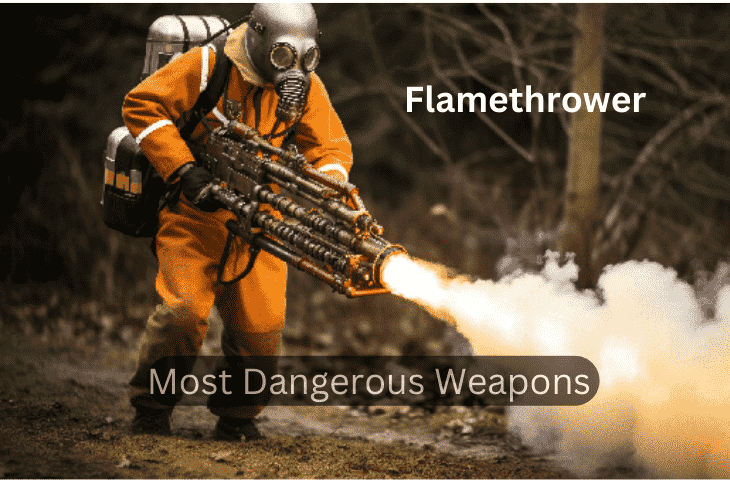
A flamethrower is an incendiary device designed to project a controlled stream of fire over a considerable distance.
Historically, flamethrowers trace back to ancient times, with the ancient Greeks using early versions as early as the 1st Century AD. They gained significant use during the First and Second World Wars, notably by the Germans.
Flamethrowers vary widely in design and function. Some operate by ejecting ignited flammable liquids, while others use gaseous fuels to produce a sustained flame. Military flamethrowers typically utilize liquid fuels, while commercial variants often opt for safer alternatives like propane and natural gases under high pressure.
Military applications traditionally involved assaulting fortified positions and bunkers, while civilian uses are more geared towards agricultural purposes such as clearing fields.
Flamethrowers come in various configurations, including portable models with separate fuel tanks (often worn as backpacks) and vehicle-mounted versions for easier deployment.
Due to their straightforward operation and maintenance, flamethrowers are effective tools, albeit ones you would not want to encounter firsthand, earning them a daunting reputation.
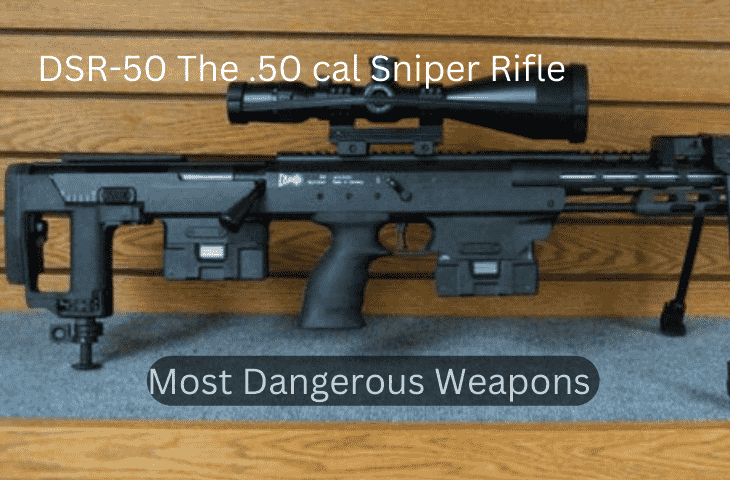
The DSR-50 stands as a bolt-action sniper rifle engineered for the potent .50 caliber BMG cartridge. Derived from the DSR-1, originally crafted for law enforcement marksmen, it boasts innovations like a built-in hydraulic recoil reduction system within its stock. Additionally, its integrated muzzle brake effectively mitigates muzzle blast, enhancing shooter comfort and control.
While primarily intended for piercing lightly armored military targets, its potential effects on human targets are best left to the imagination.
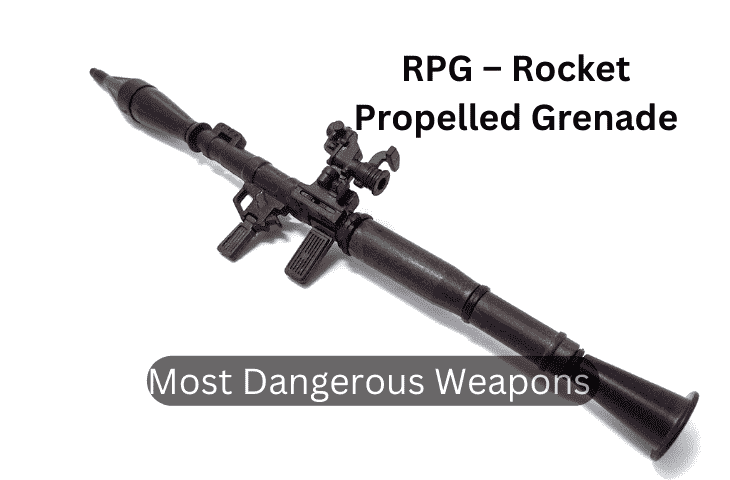
The RPG, derived from Nazi Germany’s Panzerfaust, revolutionized anti-tank warfare by enabling infantry soldiers with minimal training to effectively neutralize heavily armored tanks. This simple yet potent rocket-propelled grenade was famously wielded by Viet Cong and People’s Army forces during the Vietnam War against American troops.
Later, during the Soviet invasion of Afghanistan, the Mujahideen mastered its use, employing RPGs skillfully against tanks and military vehicles with devastating effect.
In the 1950s, the U.S. military introduced its own version, the LAW (Lightweight Antitank Weapon), further advancing portable anti-tank capabilities.
Since their inception, RPGs have remained a persistent threat to armored vehicles and tanks worldwide, embodying a cost-effective and lethal tool in modern battlefield tactics.


